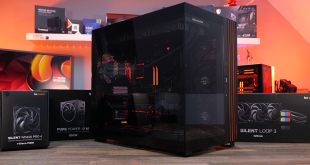Intel has revealed the first specifications of its Xe-HPC Ponte Vecchio GPU this week. Through the use of a multitude of technologies and Intel's “most advanced packaging”, the Ponte Vecchio GPU will feature over 100 billion transistors to offer more petaflops-scale AI computing performance.
Powered by OneAPI, Intel's Xe-HPC Ponte Vecchio GPU went from “idea to silicon in 2 years”. The GPU chip will be composed of 47 magic tiles: 2x base tiles powered by Intel's 10nm SuperFin technology, 16x compute tiles based on TSMC/Intel's 7nm process node, 8x Rambo cache tiles based on Intel's 10nm Enhanced SuperFin, 11x EMIB links made by Intel, 2x Xe Link I/O tiles from an unannounced foundry, and 8x HBM memory stacks from a DRAM manufacturer.
Peta-flops in your palm. An ambitious dream. @intel silicon engineers along with our packaging alchemists made it come true in just 2 years! @pgelsinger's infectious energy for technology is a great accelerant for our march onwards to bring this magic to a cloud near you pic.twitter.com/C4LMuNrY2F
— Raja Koduri (@Rajaontheedge) March 24, 2021
Intel hasn't specified the computing precision at which the Ponte Vecchio GPU would provide petaflop-class performance. Given that Intel considers FP16 to be the ideal precision for AI workloads, a petaflop of performance at FP16 is still mighty impressive. Considering Nvidia A100 GPU's (312 TFLOPS FP16), Intel's GPU might be over 3x faster.
Similarly to Nvidia and AMD's next-generation data centre GPUs, Intel Ponte Vecchio should also use a chiplet design. The Ponte Vecchio GPU is expected to be initially used in the Argonne National Laboratory's Aurora supercomputer in 2022.
KitGuru says: Intel is getting into the GPU market on all fronts at the same time. With Xe-LP for laptops, Xe-HP for workstations, Xe-HPG for gaming, and Xe-HPC for data centres, Intel should launch at least one dedicated GPU for each segment in the next year or so. Do you think Intel will compete well against the likes of AMD and Nvidia over the next year?
 KitGuru KitGuru.net – Tech News | Hardware News | Hardware Reviews | IOS | Mobile | Gaming | Graphics Cards
KitGuru KitGuru.net – Tech News | Hardware News | Hardware Reviews | IOS | Mobile | Gaming | Graphics Cards


